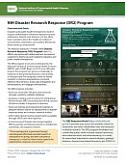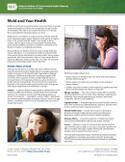Introduction
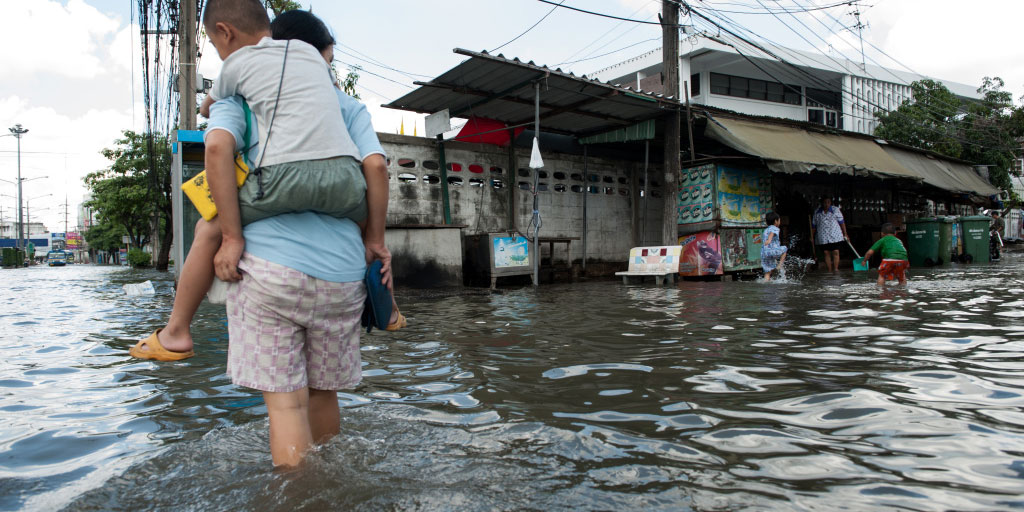
Weather extremes can have adverse effects on human health, including concerns from severe heat and cold. Storms and harsh conditions, such as hurricanes and droughts, can create secondary dangers, including floods and wildfires.
NIEHS has resources on many types of events and conditions, and some are included on this webpage.
Temperature Extremes
Heat
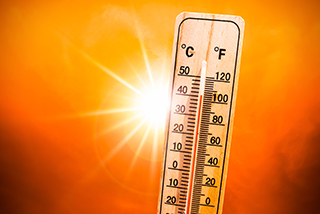
An increased number of extreme heat days or prolonged exposure to hot temperatures can harm your health. Extreme heat is a threat to human health worldwide.
A heat wave’s effects on human health can be difficult to track, but researchers are making progress. A NIEHS-funded study found that a period of dangerously high temperatures was associated with additional injury deaths in Washington state. A collection of papers from the journal Environmental Health Perspectives features studies from 2022-2024 that focus on the health effects of extreme temperature. Novel data resources and analytical techniques are enabling researchers to address more specific research questions about these health effects.
Heat-related illnesses include heat exhaustion, heat cramps, and heat stroke (also called sun stroke). Heat stroke, considered a medical emergency, occurs when a body's regulatory system fails to cool itself. As your body works to cool itself, blood rushes to the surface of your skin. As a result, less blood reaches your brain, muscles, and other organs, which can, in rare cases, cause brain damage or death.
Here are signs of stress from heat:
- Dizziness
- Fainting
- Headache
- Muscle cramps
- Nausea or vomiting
- Weakness
Read about extreme heat protection tips from the Centers for Disease Control and Prevention.
Urban Heat Islands
Rising temperatures and the associated health risks are not felt equally across populations. Cities tend to get much warmer than their surrounding landscapes. This localized increase in heat is known as the urban heat island effect and occurs as paved, dark surfaces found on roads and buildings trap more heat than vegetated landscapes. Highly developed urban areas can have mid-afternoon temperatures that are 15°F to 20°F warmer than surrounding green areas. Importantly, urban neighborhoods that were subjected to historical redlining typically lack green space and often suffer effects of heat islands.
High heat and air pollution each increase the chance of harms to human health. NIEHS-funded researchers found that deaths rose on hot days and on days with high levels of fine-particulate air pollution. But on days when an area was hit with both high heat and high air pollution, the effects were much higher than for each condition alone.
Cold
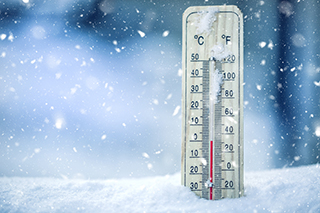
Extremely cold air is seasonal in part of the U.S., affecting millions of people. It can lead to health problems and ice-related dangers, such as falls and car accidents. In cold weather, people without adequate shelter or who are stranded may have health emergencies.
Cold air acts as a vasoconstrictor, which means it narrows blood vessels, increasing risk of heart attack and strokes. Blood pressure tends to rise with exposure to cold.
Hypothermia is a condition in which the body's internal temperature falls too low. Acute hypothermia occurs with immersion in cold water or exposure to cold weather. Prolonged exposure to even mild cold can cause hypothermia. Signs that your body is not handling cold well include stiffness in the neck, arms, and legs.
Older adults, due to changes that come with aging, may lose body heat faster than younger people. The National Institute on Aging offers tips for Cold Weather Safety for Older Adults.
For people of all ages, the Centers for Disease Control and Prevention offers prevention tips for dealing with extreme cold.
Floods
Floods are among the most frequent and damaging natural disasters in the United States. When floodwaters rise, contaminated water can carry bacteria, sewage, and hazardous chemicals that pose risks to human health and safety. Flood events are associated with increased death rates related to injuries, infectious and parasitic diseases, respiratory illnesses, and cardiovascular conditions.
Flooding can cause mold to form in homes and schools. Prolonged mold exposure can lead to worsening asthma in children, cognitive issues, and upper respiratory tract allergic symptoms.
The mental health impacts of flooding from the loss of or damage to homes, livelihoods, and access to health care systems can further complicate recovery efforts. There are also potential long-term impacts on mental health, including post-traumatic stress disorder, generalized anxiety disorder, and depression, for people living in flood-prone regions.
To support safe cleanup and recovery, the NIEHS Worker Training Program (WTP) offers free resources covering topics such as mold remediation, flood cleanup, debris removal, respiratory protection, and urban flooding.
What is NIEHS Doing?
NIEHS Efforts
- Disaster Research Centers - NIH has established an agreement with the U.S. National Science Foundation to support two centers known for their disaster response expertise. The University of Colorado Boulder Natural Hazards Center provides funding for timely collection of perishable data for health research in response to natural disasters. The University of Washington RAPID Facility offers researchers access to field sampling instruments and technologies that capture critical data on environmental exposures, including chemical contaminants, airborne pollutants, and waterborne hazards.
- Disaster Research Response – NIH created a national framework for research on the medical and public health aspects of disasters and public health emergencies. The DR2 program provides tools, training, funding, and other support to empower human health research in response to disasters and public health emergencies.
- Flooding and Hurricanes: Fugitive Chemical Health Risks – Coastal storms heighten the potential for hazardous chemicals to spread due to facility damage, storm surge, and flooding — creating "fugitive" chemicals.
- Hurricanes & Floods - The NIEHS Worker Training Program and its awardees are involved in response to hurricanes and floods as well as cleanup activities after such disasters. Find free safety awareness and training resources for emergency responders, skilled support personnel, homeowners, and business owners.
- Mold Exposure – The NIEHS Worker Training Program developed a Mold Cleanup and Treatment orientation for workers, volunteers, and homeowners who engage in small-scale mold cleanup and treatment of flooded or water-damaged homes.
- Wildfires – From the NIEHS Worker Training Program, resources and training in support of wildfire response operations in the United States.
Further Reading
Stories from the Environmental Factor (NIEHS Newsletter)
- ‘Hidden Effects of Floods’ Linked to Higher Death Rates (February/March 2025)
- Outdoor Heat Associated With Mental Health Emergencies in Young People (July 2023)
- Extreme Heat Health Interventions Top of Mind for Pediatric Physician (June 2022)
- After Disasters, Scientific Partnership and Local Engagement Are Key (July 2021)
- NIH Disaster Research Response Program Launches New Website (July 2021)
Press Releases
- Biden-Harris Administration Unveils National Heat Strategy to Protect Community Health from Extreme Heat (August 14, 2024)
Additional Resources
- Heat.gov
This website is the premier source of information regarding heat and health for the nation. It offers interactive maps, weather reports, tips for staying cool and other data to help you and officials across governments manage heat emergencies. - Hurricanes.gov
From the National Hurricane Center, an office of the National Oceanic and Atmospheric Administration. - Ready.gov
Ready is a national public service campaign designed to educate and empower the American people to prepare for, respond to and mitigate emergencies, including natural and man-made disasters.



